Best Indian Drama 2024
Indian Drama
Indian drama is a dynamic and multifaceted art form that captures the nation’s rich cultural diversity. It includes a diverse range of genres, such as Bollywood-inspired productions and contemporary street Indian Drama, as well as classical Sanskrit drama based on old texts like the India’s cultural legacy is deeply rooted in traditional forms like Ramlila, which tells the story of Lord Rama, and Kathakali, which features ornate costumes and expressive dance.
Indian modern drama
frequently blends tradition and modernity to explore social issues. From the humorous, satirical plays of Marathi drama to the intensely emotional narratives of Bengali Indian Drama, language and regional diversity contribute to a rich variety of styles.
Indian Drama reflects historical events, societal values, and the human condition in addition to being an entertainment medium.
The ruins obtained from the excavation of SitaBengra and Jogimara caves represent the oldest theatre of the world, the Wadala system. This is only one of the illustrations that highlight the long tradition of theatrical art in the Indian cultural scene
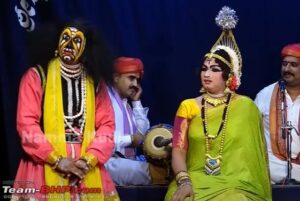
According to the Natya Shastra of ‘Bharatmuni’, Brahma composed the Natya Veda by combining elements of the four Vedas for the entertainment of the gods. It is the first formal treatise on theatrical art, describing 10 types of plays, ranging from one-off plays to 10 points of play. It covers all aspects of culture literature.
Classical Sanskrit Indian Drama
In Indian Drama art began as a narrative art form that blended music, dance and acting. Translation dance and music were an integral part of the art of Indian Drama. The Sanskrit word natak is derived from the word ‘nat’ which actually means dancer The other words used to describe drama were ‘metaphor’, ‘Drishyakavya’ and ‘Prekshakavya’. In ancient India, plays were basically of two types:
Folk style: These were used to be realistic depictions of everyday life Theatrical. These were vocal and symbolic. Traditional plays with highly stylized narratives. The Sariputtarpraka, composed by Ashoka Ghosh, is considered to be the first example of classical Sanskrit Indian Drama

. It was a nine-figure play. Another playwright of that time was Bhas, who wrote 13 plays in the period around the 3rd-4th century BCE. Sudarka was the first composer to include elements of duality in his play Mirchaktikam. Apart from the hero and heroine, this play also included a villain for the first time.
Kalidasa is perhaps the most popular among the culture playwrights. His three kirtias Malavikagnimitram Vikramosiyum and Abhijnana Shakuntalam are among the quintessential examples of classical Sanskrit drama. Kalidasa was unique in his portrayal of the Saswat duality between longing and duty; some other examples of plays include Ultraman Charitram by Bhavabhuti, Mudrarakshasa by Mahavira Charitra Vishakhadatta and Ratnavali by Harshavardhana.
10 Types of Plays in the Classical Culture
TraditionPoints have been classified into Bhan, Dima, Drama, Episode, Transmission Method and also Commission. The Natyashastra describes only two of these plays and Karan as Classical drama plays are tied to some other pari parties.
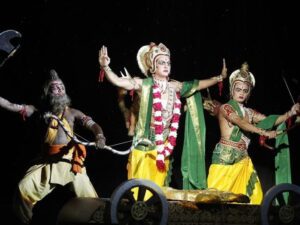
There were plays of four to seven points. Their endings were always happy where the hero wins or does not die. The hero was always a man who succeeded in fulfilling his wishes. The play had a co-defined beginning, ascent, evolution, break, and conclusion. Sanskrit plays mostly followed ritualistic ascents.
Which is the following
The play was performed in many earlier theatrical rituals called Rampur Ram, which were performed behind the scenes, the facilitator, who was the stage manager and director, came on the stage with his colleagues. The stage was of two floors, the upper floor was used for the celestial while the lower floor was used for the terrestrial area, the steps were used to enhance the effect of the play, masks were not used.
Could be broadly placed in 3 categories
The role of hero, heroine, clown, hero was played by men who could have different personalities such as fine, kind, calm. Heroes can also be antagonists like Ravana, Duryodhana etc. The heroine role was played by women in which the queen woman could be Meitraganika Vidyusak comic character plays an important role in plays.
He is a friend of the noble and the protagonist. He questions the prevailing social norms through sarcasm. Traditionally he converses in Prakrit while other characters do in culture.
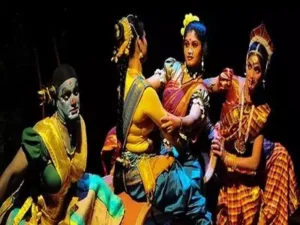
Reasons for the decline of Sanskrit Natya art
As Sanskrit dramatists began to move towards poetry, poetic writing started gaining popularity over dramatic compositions.Due to the rigid orthodoxy of Sanskrit Indian Drama, the newcomer lost his charm and he was attracted to other forms of composition.
As the form of Sanskrit became more and more ornate, its image among the common people was lost, it was progressively reduced between the religious realm and the Brahman, while other languages like Pali, Prakrit took its place, dance and music were replaced by the advent of Muslim rulers. Received state patronage, as a result the art of Indian Drama went back permanently.
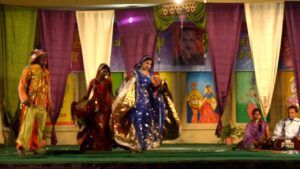
Koodiyattam
The oldest disease of theatrical art in the India which is still in vogue is that it has existed in Kerala since the 10th century. This is the Natyashastra follows the given rules. It is the traditional prerogative of the Chakiar castes of Kerala, the play is presented in Sanskriti episode and Malayalam with mood and edka instruments providing music.
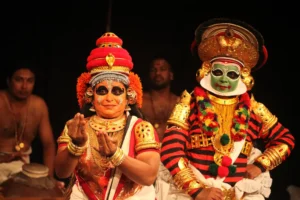
The story unfolds at a slow pace with commentary on social philosophical and political behavior. Margi Madhu Chakiyar is the main exponent of this art form
Conclusion
An Indian drama’s resolution typically represents the resolving of conflicts, the victory of good over evil, and the establishment of moral order. Indian dramas have always been strongly anchored in spiritual and cultural ideals, highlighting the significance of karma (actions) and dharma (duty).
After enduring hardships, the protagonists usually succeed in their endeavors or learn important lessons in life, which results in a satisfying ending. When antagonists or villains receive their just desserts, moral justice is strengthened.
In addition, a celebration or reunion that stands for harmony and peace may be included at the end. The moral lesson and sense of fulfillment that this ending frequently imparts to the audience mirrors the main themes of the story.
Comments
Post a Comment